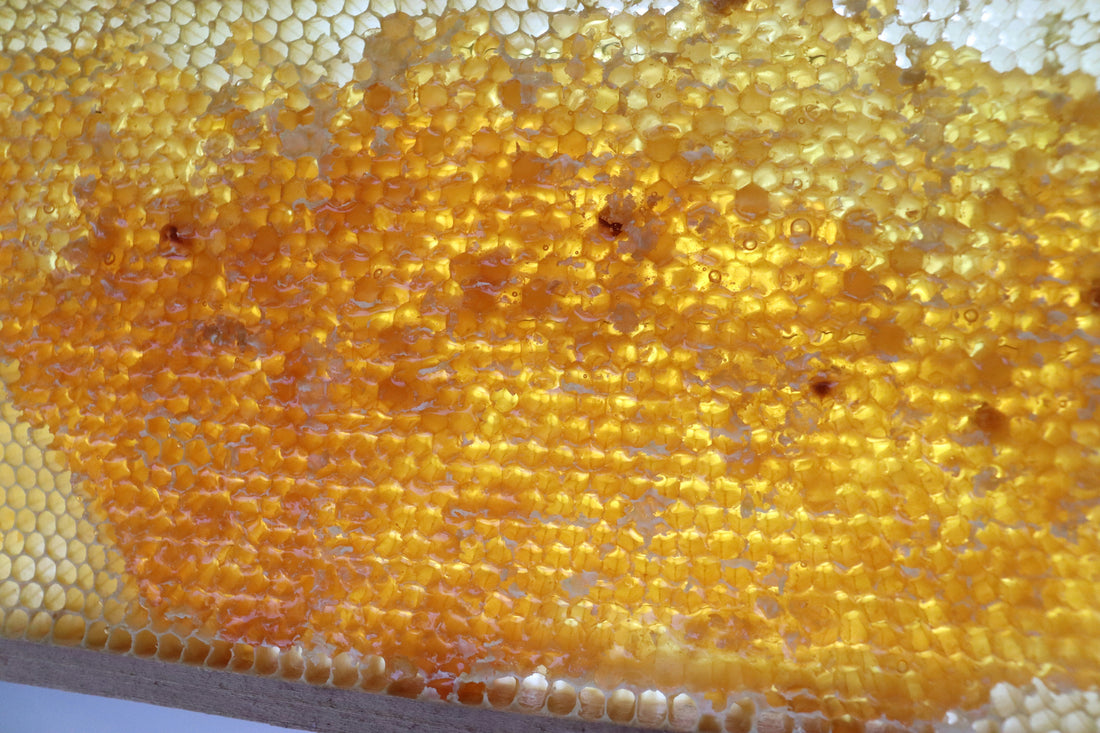Imagine life without honey. No drizzle over warm toast, no sweet touch to your tea, and no rich depth in your yoghurt. Kind of depressing, right?
Well, Americans clearly agree, because honey is flying off the shelves like never before. We’re consuming more honey than ever, mixing it into drinks, cooking with it, and even using it in skincare. But why this sudden obsession? What’s making honey the go-to choice for millions? And how much honey do Americans consume compared to the rest of the world?
There’s a lot more to this sticky love affair than just a sweet tooth and that’s what we’re here to tell you about.
How Much Honey Do Americans Consume?
The numbers don’t lie. Honey consumption in the U.S. has nearly doubled since the 1990s. Today, the average American eats about 1 pound of honey per year. That’s a lot of drizzle.
And it’s not just because it tastes good. Americans are reaching for honey because it’s pure, natural, and packed with benefits.
What Country Eats the Most Honey?
America might be leading the charge in honey consumption growth, but Germany and New Zealand take the crown for most honey eaten per person. Germans, in particular, are all about their honey, using it in everything from breakfast spreads to medicinal remedies.
That said, the U.S. still imports a massive amount of honey and revenue in the honey market has amounted to $1.53bn in 2025. So, while Americans might not be the #1 honey-eaters per capita, demand is at an all-time high.
Why Is Honey So Popular in the U.S.?
1. It’s a Healthier Sweetener
With more people looking for natural alternatives to refined sugar, honey has become the clear winner. Unlike processed sugar, honey isn’t just empty calories—it comes with antioxidants, enzymes, and trace minerals that actually support your health. Plus, it has a lower glycemic index than regular sugar, meaning it won’t spike your blood sugar as aggressively. No wonder it’s in high demand.
2. It’s in Everything Now
Food brands know what’s up. You’ll find it in everything from protein bars to salad dressings to craft cocktails. People love that it’s a clean, recognizable ingredient; one that feels wholesome, real, and packed with benefits.
3. The Wellness Industry Loves It
A spoonful of honey in warm water? Classic. A honey mask for glowing skin? Even better. The wellness world has fully embraced honey as a superfood. It’s known for soothing digestion, boosting immunity, calming inflammation, and even improving sleep. When something tastes this good and supports overall well-being, it’s no surprise that people can’t get enough.
4. It Has Stood the Test of Time
Americans may be eating more honey now than ever before, but honey has been cherished for centuries. Ancient civilizations used it for medicine, beauty, and nutrition, and today, we’re just catching up to what they already knew: honey is liquid gold.
5. It Just Tastes Better
At the end of the day, nothing else tastes like honey. The rich, complex flavours depend on the flowers the bees visit, giving you a taste of nature in every spoonful.
What does eating a lot of honey do to the body?
Here’s what you get:
● Antioxidants that fight free radicals and support overall health
● Immune-boosting properties (that’s why it’s a go-to for sore throats)
● Natural energy (a better alternative to artificial sweeteners)
● Supports digestion with enzymes and prebiotics in raw honey
● Versatility (honey can go in almost anything)
The Future of Honey in America
Americans aren’t slowing down on honey anytime soon. With more people looking for natural, nutrient-packed foods, honey is only getting more popular.
The truth is, once you’ve experienced the richness of pure honey, there’s no going back!
References
Bad Beekeeping Blog (2018). Americans eat four cents of honey every day. Wow. Retrieved from https://badbeekeepingblog.com/2018/01/06/americans-eat-four-cents-of-honey-every-day-wow/
Food Dive (2022). US honey consumption soars to all-time high amid better-for-you trend. Retrieved from https://www.fooddive.com/news/honey-consumption-soars-high-USDA-data-bees-honeybees-demand-nutrition/629810/

